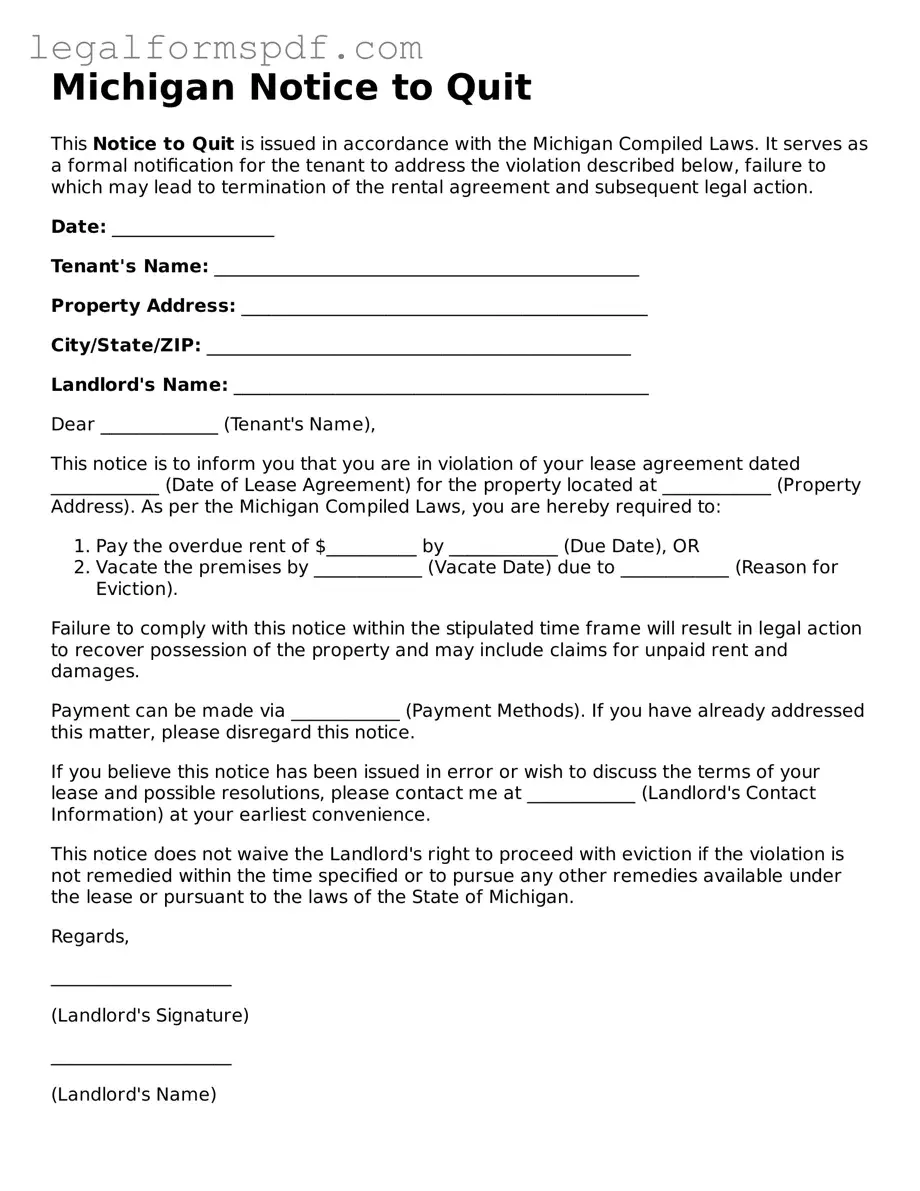Michigan Notice to Quit
This Notice to Quit is issued in accordance with the Michigan Compiled Laws. It serves as a formal notification for the tenant to address the violation described below, failure to which may lead to termination of the rental agreement and subsequent legal action.
Date: __________________
Tenant's Name: _______________________________________________
Property Address: _____________________________________________
City/State/ZIP: _______________________________________________
Landlord's Name: ______________________________________________
Dear _____________ (Tenant's Name),
This notice is to inform you that you are in violation of your lease agreement dated ____________ (Date of Lease Agreement) for the property located at ____________ (Property Address). As per the Michigan Compiled Laws, you are hereby required to:
- Pay the overdue rent of $__________ by ____________ (Due Date), OR
- Vacate the premises by ____________ (Vacate Date) due to ____________ (Reason for Eviction).
Failure to comply with this notice within the stipulated time frame will result in legal action to recover possession of the property and may include claims for unpaid rent and damages.
Payment can be made via ____________ (Payment Methods). If you have already addressed this matter, please disregard this notice.
If you believe this notice has been issued in error or wish to discuss the terms of your lease and possible resolutions, please contact me at ____________ (Landlord's Contact Information) at your earliest convenience.
This notice does not waive the Landlord's right to proceed with eviction if the violation is not remedied within the time specified or to pursue any other remedies available under the lease or pursuant to the laws of the State of Michigan.
Regards,
____________________
(Landlord's Signature)
____________________
(Landlord's Name)
Note: This template is intended for informational purposes only and may not cover all legal requirements specific to your situation. It is recommended to seek legal advice or assistance from a rental management professional to ensure compliance with local and state regulations.
